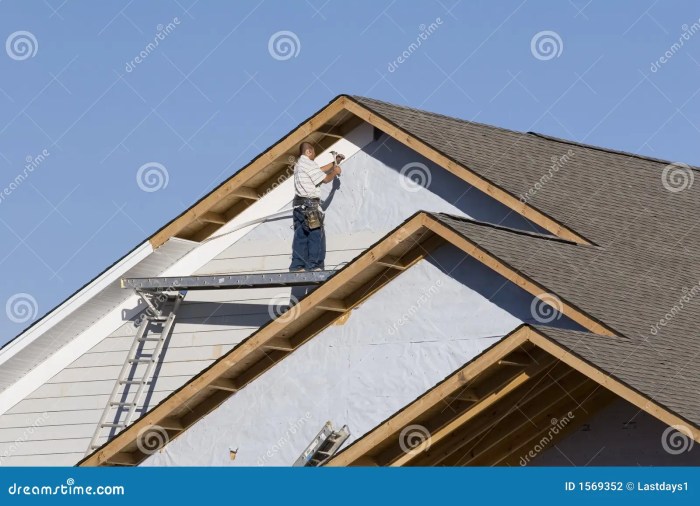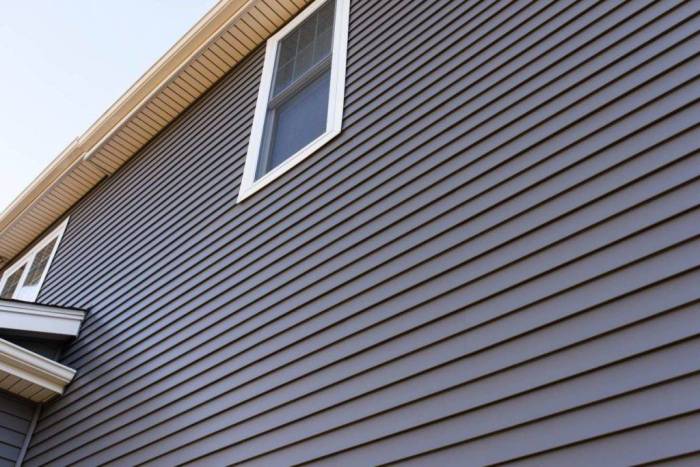Labor for Vinyl Siding: A Comprehensive Guide to Installation
Exploring the world of labor for vinyl siding, this introduction dives into the importance of skilled labor in the installation process. From the necessary tasks to the required skills, this topic sheds light on the nuances of working with vinyl siding.
Detailing the preparation, techniques, and troubleshooting involved in labor for vinyl siding, this guide aims to provide a well-rounded understanding for both beginners and experienced laborers.
Introduction to Vinyl Siding Installation for Labor
Proper labor in installing vinyl siding is crucial for ensuring a durable and visually appealing exterior for a building. The expertise and skills of laborers play a significant role in the successful completion of a vinyl siding project.
Typical Tasks Involved in Labor for Vinyl Siding Installation
- Measuring and cutting vinyl siding panels to fit specific areas of the building.
- Installing starter strips and corner posts to provide a foundation for the siding.
- Securing the siding panels to the exterior walls using appropriate fasteners.
- Caulking and sealing joints to prevent water infiltration and improve insulation.
- Trimming and finishing the siding to achieve a polished look.
Skills Required for Laborers Working with Vinyl Siding
- Knowledge of basic construction principles and techniques.
- Ability to use various tools such as a tape measure, saw, hammer, and level.
- Attention to detail to ensure precise cuts and alignment of siding panels.
- Understanding of safety protocols to prevent accidents and injuries on the job site.
- Effective communication with team members and supervisors to coordinate tasks efficiently.
Preparing for Vinyl Siding Installation
Before starting the labor for vinyl siding installation, it is crucial to prepare the work area properly to ensure a smooth and efficient process. This involves gathering the necessary tools, clearing the area, and taking necessary safety precautions.
Steps for Preparing the Work Area:
- Clear the area of any debris, vegetation, or obstacles that may hinder the installation process.
- Inspect the surface where the vinyl siding will be installed for any damage or issues that need to be addressed.
- Ensure proper ventilation in the work area to prevent the buildup of fumes or dust during installation.
Tools Needed for Vinyl Siding Installation:
- Vinyl siding panels and trim pieces
- Hammer and nails or a nail gun
- Tape measure and level
- Circular saw or tin snips for cutting the siding
- J-channel, utility trim, and other necessary accessories
Safety Measures for Laborers:
- Wear appropriate safety gear such as gloves, safety glasses, and a dust mask to protect yourself from debris and dust.
- Avoid working in extreme weather conditions such as high winds or rain to prevent accidents and ensure proper installation.
- Use caution when working at heights and always use proper fall protection equipment to prevent falls and injuries.
Vinyl Siding Installation Techniques
Installing vinyl siding requires specific techniques to ensure a proper and long-lasting finish. Laborers use various approaches to complete this task efficiently. Let's explore some common techniques and tips for effective vinyl siding installation.
1. Horizontal Installation
Horizontal installation is a popular technique where vinyl siding panels are installed parallel to the ground. This method is commonly used as it provides a traditional look and allows for easy water runoff. Laborers need to ensure each panel overlaps correctly to prevent water infiltration.
2. Vertical Installation
Vertical installation involves installing vinyl siding panels vertically, creating a unique and modern aesthetic. This technique is less common but can add visual interest to a property. Laborers must pay attention to proper alignment and spacing when using this method.
3. Starter Strip Placement
Proper placement of the starter strip is crucial for a successful vinyl siding installation. The starter strip serves as the foundation for the first row of siding panels and helps ensure a straight and even application. Laborers should carefully measure and position the starter strip to avoid future issues.
4. J-Channel Installation
J-channels are essential components used to secure the edges of vinyl siding panels. Laborers must install J-channels around windows, doors, corners, and other openings to provide a clean and finished look. Properly securing J-channels is important to prevent wind damage and water infiltration.
5. Nail Placement and Technique
Nailing vinyl siding panels requires precision and care. Laborers should use the appropriate length of nails and avoid overdriving them, which can cause damage to the panels. Nails should be placed in the center of the nailing slots to allow for expansion and contraction of the vinyl siding
6. Cutting and Trimming
Accurate cutting and trimming of vinyl siding panels are essential for a professional finish. Laborers must use specialized tools like tin snips or a vinyl siding cutter to make precise cuts. Properly trimming around corners, windows, and doors is crucial for a seamless installation.
7. Cleaning and Maintenance
After completing the vinyl siding installation, laborers should clean the panels to remove any dirt or debris. Regular maintenance, such as washing the siding with a mild detergent and water, can help prolong the life of the vinyl and maintain its appearance.
Laborers should also inspect the siding for any damage or loose panels periodically.
Troubleshooting and Problem-Solving during Labor

When working on vinyl siding installation, laborers may encounter various issues that can disrupt the workflow. Knowing how to troubleshoot and solve problems effectively is crucial to ensure the project is completed successfully.
Common Issues During Vinyl Siding Installation
- Uneven or warped siding panels
- Improperly secured or loose siding
- Gaps or overlaps between siding panels
- Moisture or water damage behind the siding
- Mismatched colors or styles of siding
Troubleshooting Methods
- Inspect the siding panels for any defects or damage before installation.
- Ensure proper alignment and secure fastening of siding panels to prevent warping or looseness.
- Use a level to check for evenness and adjust as needed to eliminate gaps or overlaps.
- Address any signs of moisture or water damage immediately to prevent further issues.
- Double-check the color and style of siding panels before installation to avoid mismatched appearances.
Adapting to Unexpected Challenges
- Stay calm and assess the situation carefully before taking any action.
- Consult with team members or supervisors for input on how to address the problem.
- Be flexible and willing to try different approaches to solve the issue effectively.
- Take the time to understand the root cause of the problem to prevent similar issues in the future.
Cleaning and Maintenance Post-Installation
After completing the vinyl siding installation labor, it is crucial to focus on the cleaning and maintenance process to ensure the longevity and appearance of your vinyl siding.
Cleaning Process
- Regularly wash the siding with a garden hose or pressure washer to remove dirt, dust, and other debris that can accumulate over time.
- Use a mild detergent and a soft brush or cloth to scrub any stubborn stains, mold, or mildew that may develop on the surface.
- Rinse thoroughly to remove all soap residue and prevent streaking on the siding.
Importance of Post-Installation Maintenance
Proper cleaning and maintenance post-installation are essential to preserve the color, texture, and overall quality of your vinyl siding. Neglecting these tasks can lead to premature deterioration and costly repairs in the future.
Tips for Maintaining Vinyl Siding
- Inspect the siding regularly for any signs of damage, such as cracks, warping, or loose panels, and address them promptly to prevent further issues.
- Avoid using harsh chemicals or abrasive materials that can damage the surface of the siding and compromise its integrity.
- Trim any nearby trees or bushes to prevent branches from rubbing against the siding and causing scratches or other damage.
- Consider applying a protective wax coating to enhance the shine and durability of your vinyl siding, especially in high-traffic areas.
Closure

Concluding our discussion on labor for vinyl siding, it's evident that proper labor is crucial for a successful installation. By following the Artikeld steps and tips, laborers can ensure a smooth and efficient process, resulting in high-quality vinyl siding that stands the test of time.
Helpful Answers
What are the common issues during vinyl siding installation?
Common issues include warping of siding panels, improper alignment, and difficulty in cutting pieces to fit. Proper measurements and tools can help prevent these problems.
How important is post-installation maintenance for vinyl siding?
Post-installation maintenance is crucial to ensure the longevity and appearance of vinyl siding. Regular cleaning and inspections can help identify and address issues early on.
What are the essential skills required for laborers working with vinyl siding?
Skills such as measuring accurately, using cutting tools effectively, and understanding the layout of a structure are essential for laborers handling vinyl siding installation.




